The Arctic hare is a species of hare found in the Arctic tundra regions of North America and Greenland.
These hares are adapted to living in extreme cold environments with thick fur that changes color from white to brown during seasonal transitions.
They have large hind legs that help them move quickly over snow-covered terrain to escape predators.
Despite their impressive adaptations, Arctic hares still face many threats from predators who hunt them for food.
Understanding these predators and how they interact with Arctic hares is essential for conservation efforts and understanding ecosystem dynamics in the tundra region.
This article will explore the different types of predators that prey on Arctic hares and examine their hunting strategies and impacts on the population of this important species.
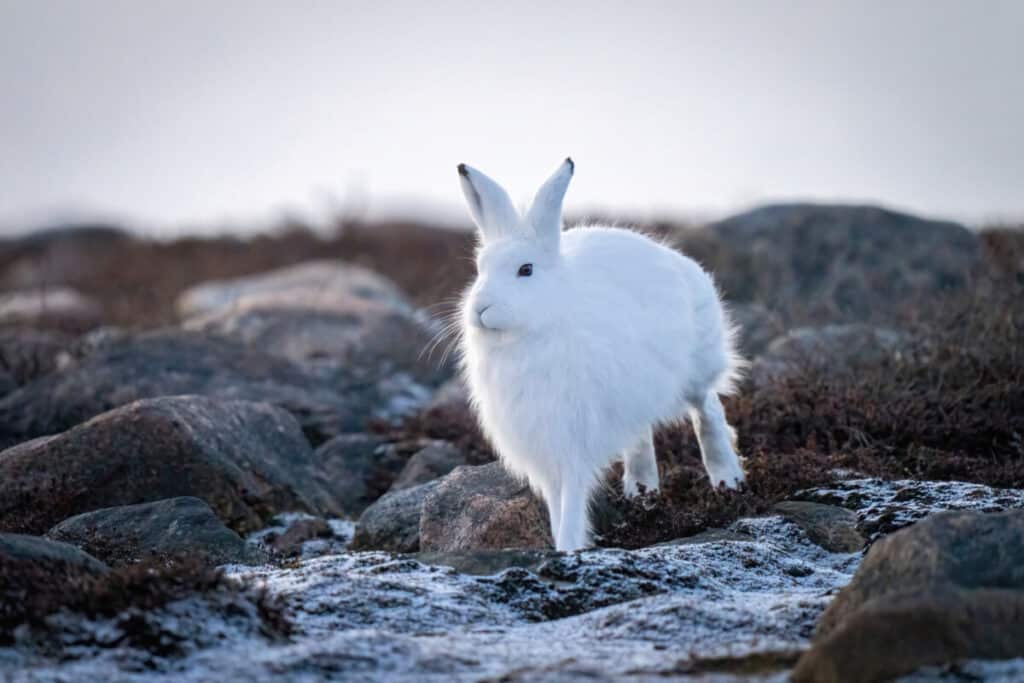
The Importance Of Arctic Hares In The Tundra Ecosystem
Arctic hares are an important part of the tundra ecosystem, serving a crucial role in the food chain. As herbivores, they consume vegetation such as grasses and shrubs, providing sustenance for predators higher up on the food chain.
Their presence also helps to regulate plant growth by controlling the amount of vegetation available to other animals that graze on it. In addition to their impact on the food chain, arctic hares have a direct effect on the growth of vegetation in their environment.
By consuming certain species of plants more heavily than others, they can alter the composition of plant communities and influence which types of plants thrive in different areas. This can have far-reaching consequences for other organisms in the ecosystem that rely on these plants for food or shelter.
Thus, understanding the role of arctic hares is essential for maintaining healthy and balanced ecosystems in Arctic regions.
Arctic Hare’s Predators Exposed: A Fight for Survival
The Physical Adaptations Of Arctic Hares For Survival
Arctic hares are an essential part of the tundra ecosystem as they serve as prey for several predators. However, these animals also have their own set of survival strategies to avoid being hunted down.
One such strategy is their ability to run at a speed of up to 60 km/hour, making them one of the fastest land mammals in the Arctic region. This allows them to outrun most predators and escape danger.
Apart from their impressive running skills, arctic hares also possess physical adaptations that help them survive in harsh Arctic conditions. These include having thick fur coats that protect against extreme cold temperatures and camouflage colors that allow them to blend into their surroundings, avoiding detection by potential predators.
Additionally, they have large hind feet that enable them to move easily on snow and dig holes where they can hide or rest during severe weather conditions.
Overall, Arctic Hares have developed numerous climate adaptations over time that aid in their survival within the challenging climates experienced throughout much of Canada’s northern regions. Their physical traits combined with their swift movements make it difficult for many species of predator to capture them, thus providing an important role in maintaining balance between predator and prey populations across the tundra ecosystem.
Hares and Their Predators: Unveiling the Threats
Natural Predators Of Arctic Hares
Arctic hares are herbivorous animals that inhabit the tundra regions in North America and Greenland. Despite their agility, they fall prey to various predators in the harsh arctic environment.
The primary natural predators of arctic hares include wolves, foxes, lynx, and snowy owls. Wolves are the most significant predator of arctic hares as they hunt in packs and can bring down even adult hares.
Foxes also pose a serious threat to young or injured hares that may not be able to escape quickly enough.
Lynx is another predator known for preying on juvenile and weakened individuals of the species. Snowy owls have been observed taking down full-grown arctic hares during times when other food sources are scarce.
The predation patterns vary with seasons; for instance, there is an increased risk of predation by Arctic wolves during winter months due to reduced food availability leading to changes in hunting patterns.
Arctic hare populations face many challenges from climate change and human activities such as hunting and habitat loss. Additionally, since these creatures form a vital part of the ecosystem’s food chain, any decline in their numbers could trigger adverse effects throughout the region’s entire ecological system.
Therefore, it is crucial to monitor population trends regularly and implement conservation measures aimed at preserving habitats and mitigating potential threats posed by humans or other factors impacting wildlife survival in this fragile region.
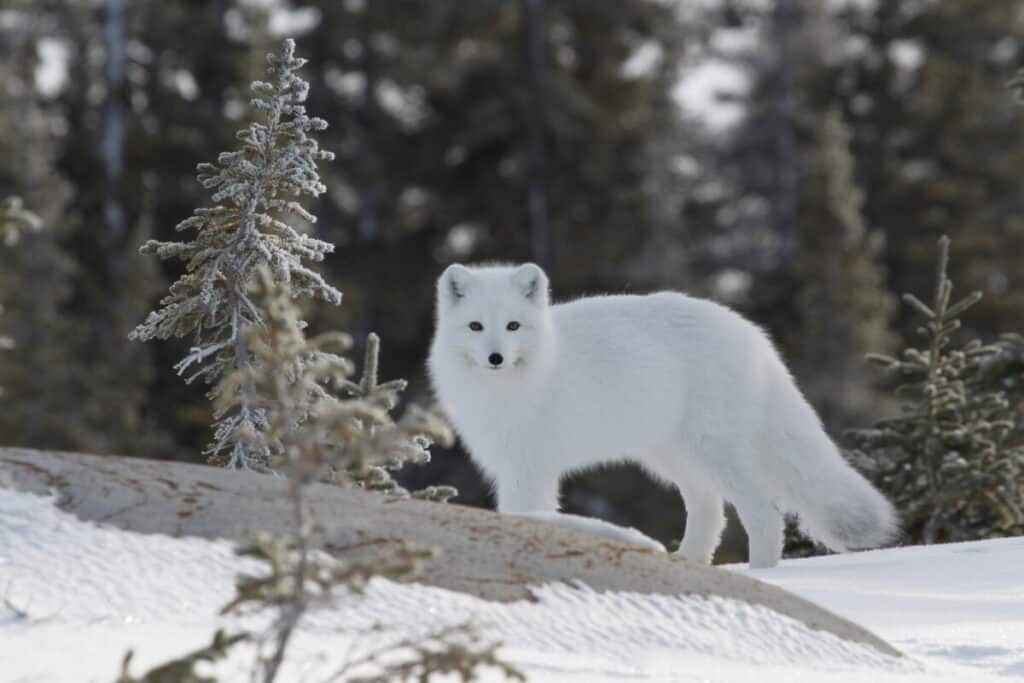
Foxes
Foxes are opportunistic predators that frequently prey on Arctic hares in their natural habitats. Arctic foxes, in particular, have specialized adaptations that allow them to thrive in cold environments. They are skilled hunters, using their acute hearing and keen sense of smell to detect the presence of hares.
With their incredible speed and agility, foxes chase down their prey, often engaging in prolonged chases over snow-covered terrain. They rely on their sharp teeth and jaws to deliver swift and precise bites to the hares, targeting vulnerable areas such as the neck or head.
Once the hare is caught, the fox will consume it on the spot or carry it back to its den, where it can feed on the prey and store any excess food for later consumption.
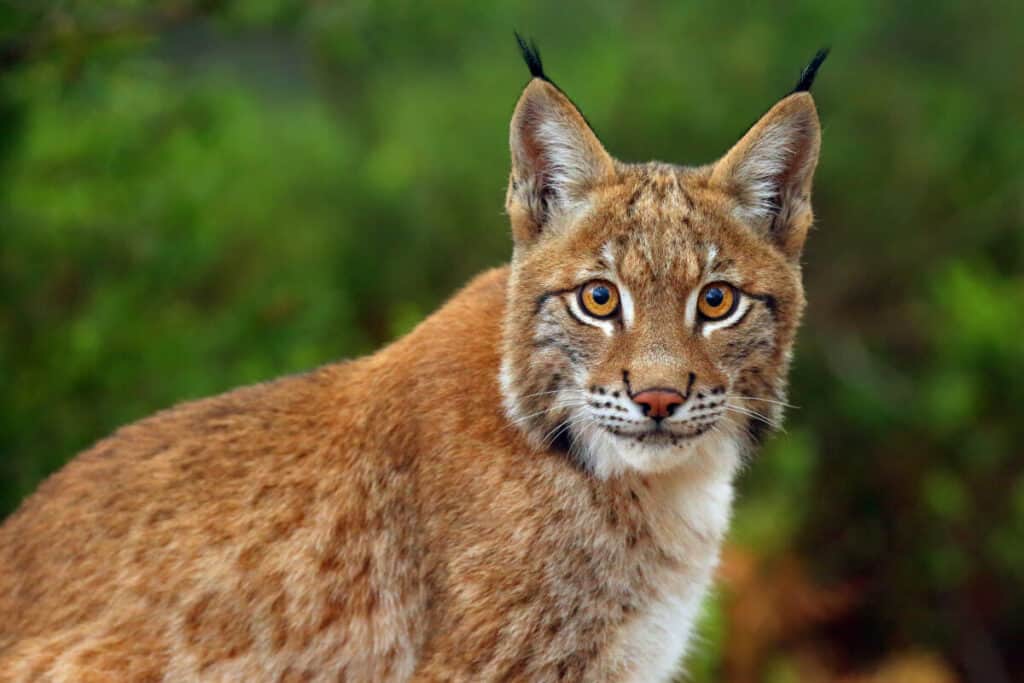
Lynx
Lynx are another predator of Arctic hares and play an important role in regulating their populations. Lynx are stealthy and elusive predators, blending seamlessly into the snowy landscape. They possess excellent camouflage and patience, allowing them to stalk their prey undetected.
Lynx primarily rely on their powerful hind legs to propel themselves towards their quarry in explosive bursts of speed. Once within striking distance, they pounce on the hare, using their sharp claws to grip and immobilize it.
With a quick and precise bite to the neck, the lynx delivers a fatal blow to the hare. They then consume the prey on the spot or may drag it to a secluded location for feeding. Lynx are well-adapted to the harsh Arctic environment and their hunting prowess ensures a supply of food even during periods of limited resources.
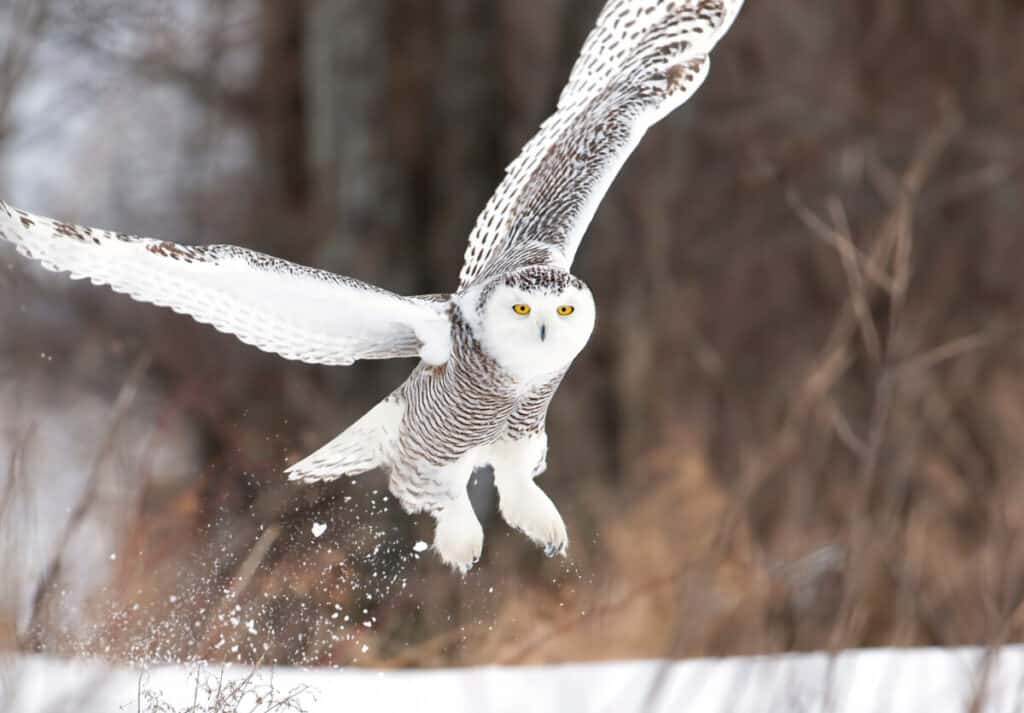
Snowy Owls
Snowy owls are skilled hunters that take advantage of their excellent vision and silent flight to hunt hares in the Arctic tundra. These large, white owls perch on elevated areas, scanning the landscape for any signs of movement.
Once they spot an Arctic hare, they swoop down with remarkable precision and snatch their prey with their sharp talons. Snowy owls are opportunistic hunters and can also rely on their exceptional hearing to detect the sounds of small mammals moving under the snow.
After capturing a hare, they typically consume it on the spot or may carry it back to their roost to feed on.
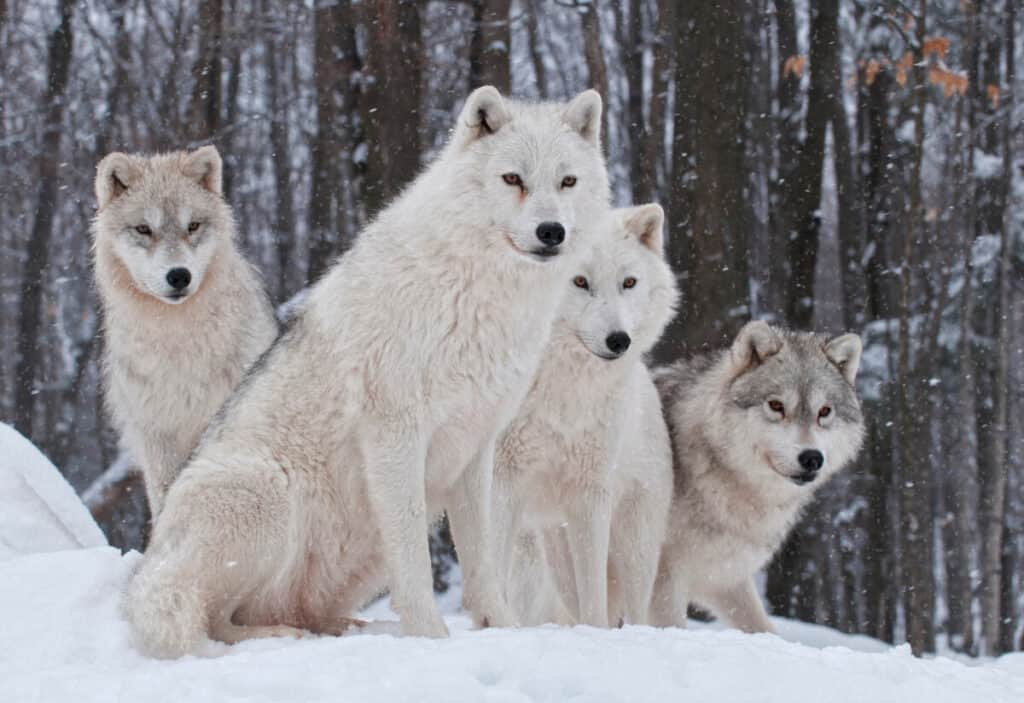
Wolves
Wolves are highly social and efficient predators that can hunt cooperatively to target larger prey like Arctic hares. They rely on their keen sense of smell and exceptional stamina to track hares over long distances.
When hunting, wolves work together, using a combination of strategies such as chasing, herding, and flanking to exhaust and separate their prey from the group. Once a hare is isolated, wolves move in for the kill, using their powerful jaws and teeth to bring it down.
Their pack structure enables them to take down larger prey than they would be able to individually, and the hare becomes a vital source of food for the entire wolf pack.
Hunting Strategies Employed By Arctic Hare Predators
Predator-prey dynamics in the Arctic region are complex and fascinating. The arctic hare is a primary prey species for several predators, including wolves, foxes, and birds of prey like snowy owls. These predators have evolved unique hunting strategies to capture their elusive target.
Wolves are one of the top predators of arctic hares. They hunt in packs, which enables them to take down larger prey animals such as caribou but allows them to chase after smaller preys like arctic hares with ease.
Foxes use their acute senses of hearing and smell to locate their prey before pouncing on it from above or behind cover.
Meanwhile, snowy owls rely on stealth attacks; they silently glide over the snow surface using their white feathers as camouflage before swooping down and grabbing the unsuspecting arctic hare with their sharp talons.
In response to these threats, arctic hares have developed survival adaptations such as having fur that camouflages well with its environment during winter months and can also change color based on seasonality providing it an added layer of protection against predation.
Human Impact On Arctic Hare Populations
Having explored the hunting strategies employed by Arctic hare predators, it is important to examine how human intervention and climate change have affected their populations.
In recent years, increasing human activity in the Arctic has led to habitat destruction and fragmentation as well as increased hunting pressure on these animals.
Furthermore, climate change has also had a significant impact on the Arctic hare population.
As temperatures rise and snow cover decreases, hares are forced to adapt to new environments with less protective camouflage. This puts them at greater risk of predation by natural predators such as wolves and foxes.
Overall, it is clear that both human intervention and climate change pose major threats to the survival of arctic hares in their native habitats.
As we continue to explore ways to mitigate our impact on wildlife, it is essential that we take into account the needs of all species living within these ecosystems.
Whether through conservation efforts or policy changes aimed at reducing carbon emissions, there are many steps that can be taken towards ensuring a more sustainable future for arctic hares and other vulnerable species in this region.
Conservation Efforts To Protect Arctic Hares
The vulnerability of Arctic hares to climate change has led to the implementation of various conservation efforts.
As a result, there has been an increase in Arctic hare research aimed at understanding their population dynamics and habitat preferences.
Researchers have made significant progress in identifying predators of Arctic hares, including foxes, wolves, lynx, and birds of prey.
Climate change impact on the Arctic hare’s habitat is one major concern for conservationists.
The melting of sea ice due to global warming has altered the availability and quality of vegetation that these animals rely on for survival.
In addition, rising temperatures can also lead to increased predation pressure from other species as they expand into new territories or alter migration patterns.
Therefore, ongoing monitoring and protection measures are essential to ensure the long-term survival of this iconic Arctic animal amidst changing environmental conditions.
Future Outlook For The Arctic Hare Population
The Arctic hare, a beloved and iconic species of the tundra, faces an uncertain future due to the impacts of climate change. The warming temperatures have led to a decrease in snow cover, which leaves them vulnerable to predators such as foxes, wolves, and birds of prey. In addition to this, changes in vegetation patterns have also disrupted their natural foraging habits.
Despite efforts by conservationists to protect their populations through hunting restrictions and habitat preservation, these measures may not be enough to save the Arctic hare from extinction. As human activities continue to contribute to global warming, it is likely that we will see further declines in their numbers. It is crucial that we take action now to address the root causes of climate change if we hope to secure a future for this beautiful species.
While there is no doubt that the Arctic hare population faces significant challenges ahead, there are still reasons for optimism. By working together with local communities and governments, scientists can develop innovative solutions that help mitigate the effects of climate change on these animals.
Whether it’s developing new technologies or implementing sustainable policies that reduce our carbon footprint, we all have a role to play in safeguarding the future of this magnificent species. With concerted effort and dedication, there is every reason to believe that we can turn the tide and ensure that generations yet unborn can marvel at the beauty of an Arctic landscape graced by hares once more.
Conclusion
Arctic hares are an important species in the Arctic tundra ecosystem, serving as prey for several predators.
Their physical adaptations, such as their white fur and long legs, allow them to survive in harsh environments where food is scarce. However, they face natural threats from predators such as foxes, wolves, and birds of prey that employ various hunting strategies.
Human activity has also impacted arctic hare populations through habitat destruction and climate change. Conservation efforts have been put in place to protect these animals, including restrictions on hunting and preservation of habitats.
The future outlook for the arctic hare population remains uncertain due to ongoing environmental changes.
Overall, understanding the role of arctic hares in the ecosystem and their interactions with predators is crucial for conservation efforts. As we continue to monitor this species and its environment, it is important to address human impacts and implement sustainable practices to ensure their survival for generations to come.

